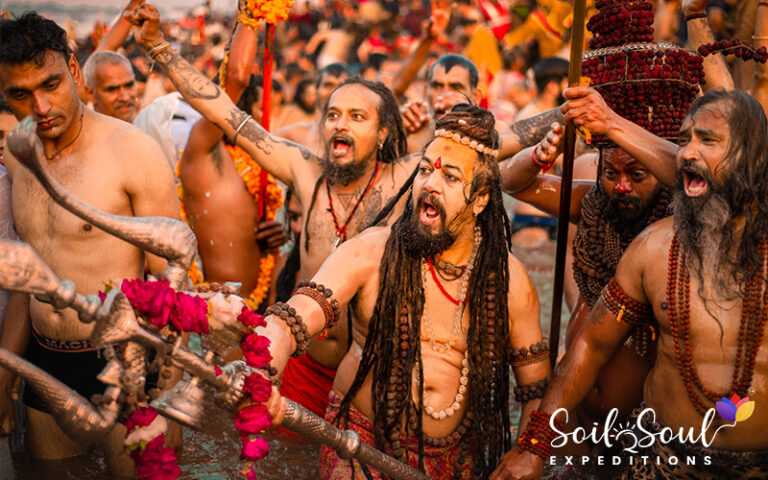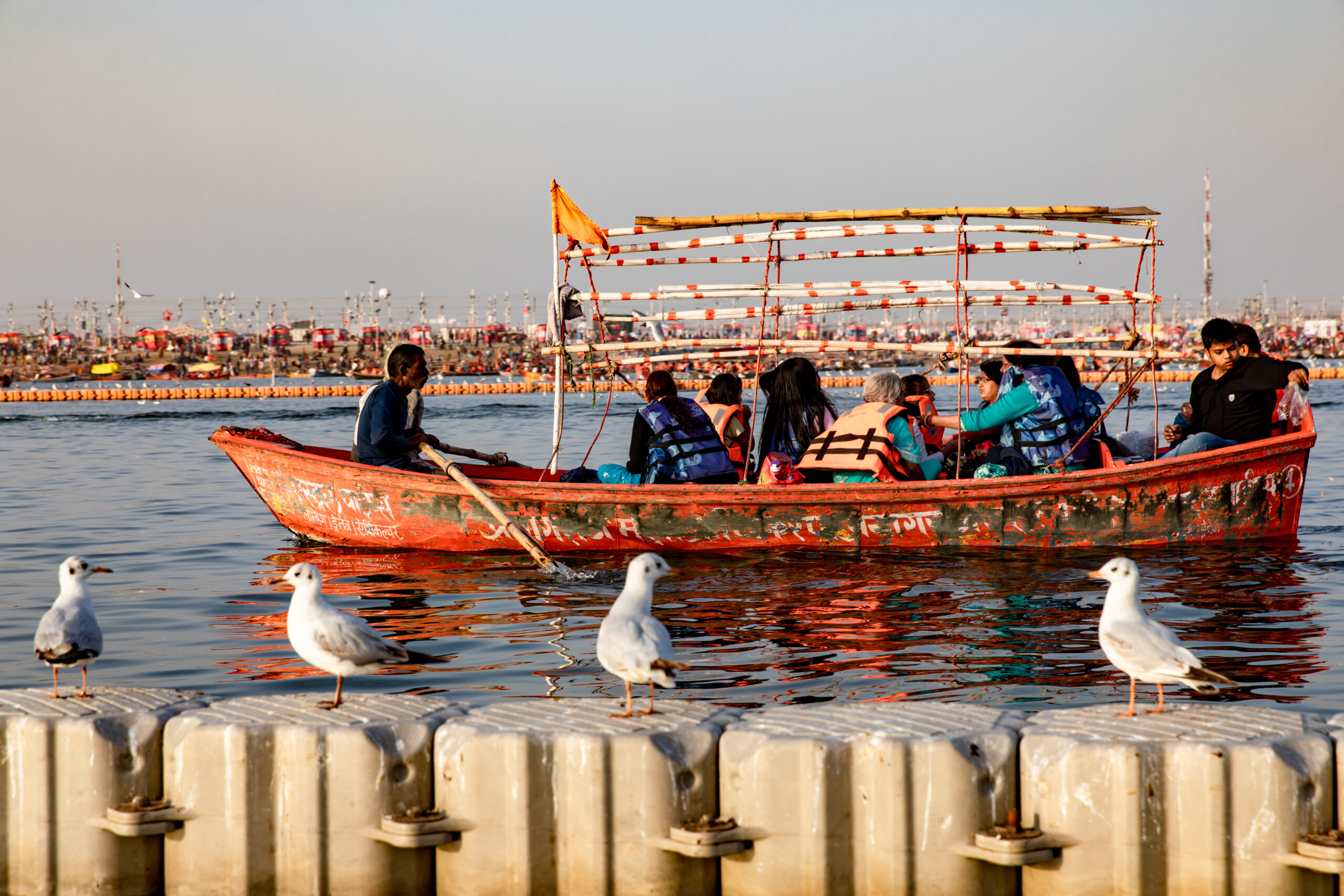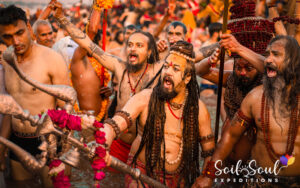Every twelve years (and at smaller “Ardha” editions every six years), the Kumbh Mela in Prayagraj transforms into a transient city of faith, drawing over 50 million pilgrims during peak bathing days. Situated at the Triveni Sangam—the confluence of the Ganges, Yamuna, and the mythical Saraswati—this festival is steeped in mythic lore, ritual precision, and communal devotion. Whether you’re a first‑timer or a seasoned traveler, understanding the sacred bathing ceremonies, the role of spiritual leaders, and the modern amenities on offer will help you navigate this vast ocean of humanity with confidence and respect.
1. The Sacred Bathing Ritual at the Triveni Sangam
At the core of the Kumbh Mela in Prayagraj lies the belief that a single dip in the Triveni Sangam during the auspicious Shahi Snan (royal bath) cleanses all past sins and liberates the soul from the cycle of birth and death. These main bathing days are determined by precise planetary alignments—when Jupiter, the Sun, and the Moon form specific configurations in relation to Aquarius or Aries.
-
Timing and Sequence
The festival spans roughly 55 days, with nine key bathing dates. The Shahi Snan for the twelve akharas (monastic orders) occurs on these dates, each akhara taking its turn at dawn. Arrive at least two hours before sunrise to secure a spot near the water’s edge—the gates open as early as 3 AM, and the atmosphere is electric with drums, conch shells, and devotional chants. -
Ritual Practices
Pilgrims prepare by fasting or taking vows of silence for days leading up to the bath. Many bring small brass lotas (water pots) to scoop the holy water and sprinkle it upon family members or keep it for daily blessings long after the Kumbh Mela in Prayagraj ends. For those who prefer to observe, elevated viewing platforms and seating tiers ring the ghats, offering a bird’s‑eye view of the cascading human tide. -
Safety and Respect
Officials deploy thousands of lifeguards, volunteers, and police to manage crowd flow. Follow the marked lanes and volunteers’ instructions to avoid bottlenecks. Respect local customs: remove shoes before stepping onto the ghats, and wear modest attire that covers shoulders and knees.
Standing at the Sangam’s edge, the mist rising off the sacred waters and the echo of conch shells will imprint a memory you’ll cherish forever at the Kumbh Mela in Prayagraj.
2. Encountering Spiritual Leaders and Naga Sadhus
Beyond the plunge, the Kumbh Mela in Prayagraj is famed for its assembly of ascetics and gurus—each a living chapter of India’s spiritual heritage.
-
The Naga Sadhus
The naked, ash‑smeared Naga sadhus are members of martial monastic orders created in the 8th century to defend Hindu dharma. Clad only in loincloths or sometimes nothing at all, they carry tridents (trishuls) and swords, symbolizing spiritual power. Their pre‑dawn processions (Shahi Snan) are spectacles of silent authority: no music, just the thunder of bare feet and the crackle of fire torches. -
Akharas and Lineages
Twelve main akharas—ranging from the Shaiva‑leaning Juna Akhara to the Vaishnava‑oriented Nirmohi Akhara—vie subtly for precedence. Each akhara’s leaders (Mahant and Mahamandaleshwar) deliver blessings and blessings tokens (prasads), which pilgrims clutch like precious talismans. -
Discourses and Satsangs
Throughout the grounds, open‑air lectures in Hindi, Sanskrit, and English unfold daily. Recognized masters discuss yoga techniques, Ayurvedic healing, and nonviolence, inviting questions afterward. These satsangs are free—simply arrive early to claim a mat in the shade.
When you approach these holy figures, do so with folded hands (“namaste”) and a soft voice. A brief “dakshina” (offering) in the akhara’s collection box is customary but never mandatory. The spiritual insights you gain at the Kumbh Mela in Prayagraj often outlive the souvenirs you carry home.
3. Cultural Celebrations and Modern Facilities
While devotion is the heart of the Kumbh Mela in Prayagraj, the festival’s soul sparkles with vibrant culture and contemporary comforts.
-
Arts and Performances
Dozens of stages host classical Hindustani and Carnatic music, Kathak and Odissi dance recitals, and Ramayana puppet shows under colorful canopies. Folk troupes from Uttar Pradesh, Assam, and Rajasthan perform storytelling ballads (keertans) that bring mythic episodes to life. -
Marketplace and Handicrafts
Stalls line the mela pathways offering everything from turmeric‑soaked prayer beads to hand‑woven Banarasi scarves. Saffron merchants, iron‑chain wrestlers, and Ayurvedic doctors showcase traditional crafts and cures, preserving local livelihoods. -
Infrastructure Upgrades
-
Sanitation & Water: Over 10,000 mobile toilets and purified drinking stations ensure hygiene.
-
Connectivity: Free Wi‑Fi hotspots and charging stations keep you online.
-
Health Services: First‑aid tents staffed by doctors handle common ailments, while mini‑hospitals stand ready for emergencies.
-
Navigation: Download the official “Kumbh 2025” app for interactive maps, event schedules, and an SOS button to contact security or medical teams.
-
From tent‑city glamping clusters with private bathrooms to affordable dharamshalas a short walk away, the modern Kumbh Mela in Prayagraj is designed for comfort as well as spiritual uplift.
Travel Tips and Logistics
-
Plan Your Dates
Check the nine main bathing days on the official website well in advance, then book transport and accommodation early. -
Stay Hydrated
Daytime highs often exceed 40 °C. Carry a refillable bottle to use at the purified water stations. -
Dress for Respect & Comfort
Lightweight cotton garments in muted colors ease heat and align with local norms—cover shoulders and knees. -
Cash & Digital Payments
Small vendors may accept only cash; ATMs and UPI kiosks are plentiful, but lines can be long. -
Local Transport
Park‑and‑ride shuttles run from Allahabad Junction railway station; pre‑paid taxis and app‑based autos serve the city center. -
Peak vs. Off‑Peak
Arrive on non‑bathing days or late afternoons to explore cultural programs with smaller crowds. -
Language
Hindi is predominant; knowing basic phrases (“Shukriya” for thank you, “Kitna?” for price) helps smooth interactions.
Final Thoughts
The Kumbh Mela in Prayagraj is more than a pilgrimage—it’s a grand tapestry of ancient faith, vibrant culture, and contemporary organization. Whether you come for the holy dip, the silent power of Naga sadhus, or the rich performances under open skies, every moment is orchestrated to uplift the spirit. By preparing for the sacred bathing rites, engaging with spiritual elders respectfully, and leveraging the modern facilities, you’ll leave the Kumbh Mela in Prayagraj with memories as enduring as the river’s flow.
Frequently Asked Questions (FAQs)
1. When is the next Kumbh Mela in Prayagraj?
The next full Kumbh Mela in Prayagraj follows the twelve‑year cycle; after 2013 and 2025, it will occur in 2037. Exact dates are published by the Prayagraj Mela Authority one to two years before the event.
2. Do I need a ticket for the Kumbh Mela in Prayagraj?
No tickets are required for general entry. However, you can register on the official app to reserve spots in VIP viewing galleries, book medical checkups, and receive real‑time alerts.
3. How can I reach the festival grounds?
Allahabad Junction railway station is the nearest major railhead. During the Kumbh Mela in Prayagraj, special trains stop here, and park‑and‑ride buses transfer pilgrims directly to the ghats.
4. Is it safe to travel alone at the Kumbh Mela in Prayagraj?
Yes. The mela has extensive CCTV coverage, 24/7 police patrolling, and volunteer help desks. Solo travelers should still follow basic safety measures: keep copies of ID, share their itinerary, and use the SOS feature in the official app if needed.
5. What should I pack for the Kumbh Mela in Prayagraj?
Bring a sunhat, sunscreen, sturdy sandals, a reusable water bottle, modest cotton clothing, a power bank, basic first‑aid items, and some small‑denomination cash for street‑side purchases.




